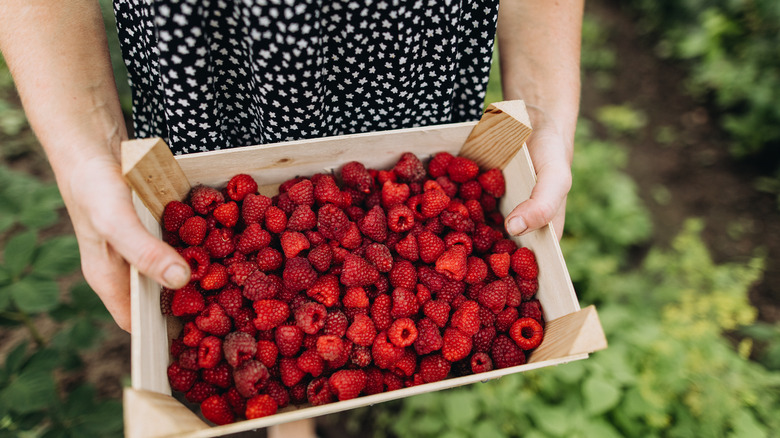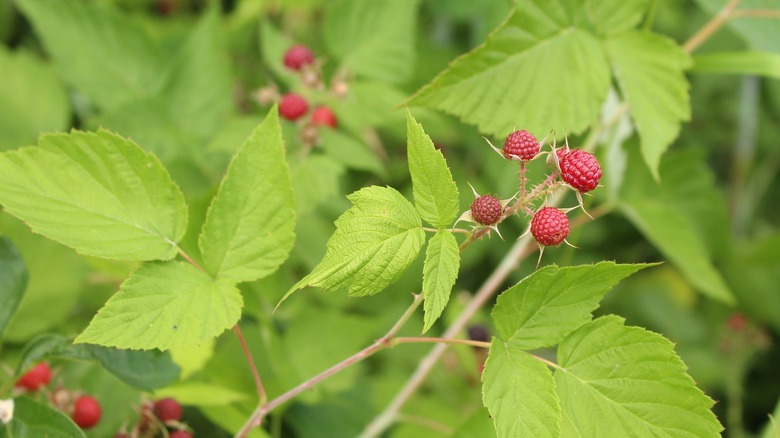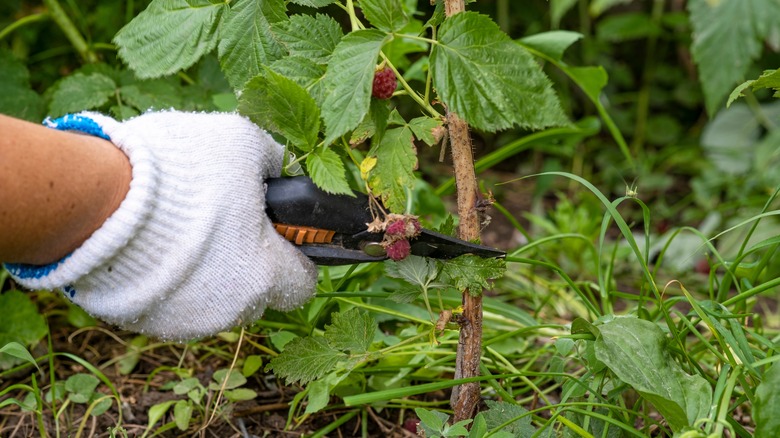Helpful Tips For Pruning Raspberries To Ensure A Juicy Harvest
Raspberries aren't just delicious and nutritious — they're also surprisingly easy to grow at home. With the right care, they can be extremely productive berry bushes in your yard. Maximizing your raspberry harvest depends on properly pruning your bushes. Some of the most important tips to keep in mind when pruning include preventing overcrowding, using the right tools, removing canes after two years, and encouraging branching for varieties that require it.
Overcrowding is a common reason raspberry bushes underperform, which is why it is so important to stay on top of pruning your plants. If the canes grow too closely together, the plants won't receive enough airflow and sunlight, leading to sickly plants and lackluster harvests. Red raspberries are especially prone to overcrowding issues as they sucker from the roots, unlike black and purple raspberries, which form new canes from the base of the previous year's canes and don't spread as aggressively.
Pruning your raspberry bush
While some varieties of thornless raspberries are available, most raspberries have sharp spines along their canes, so be sure to wear heavy leather gloves when pruning them, just as you would when pruning roses. Also, use clean and sharp pruning shears that work well so they don't damage the plants. You should remove any obviously dead, diseased, or damaged canes in early spring while the plants are still dormant. These canes will be brittle and gray or white colored. This will help your raspberry plant grow well and stay healthy, both by preventing disease and by giving the new canes more space. If any of the canes' tips have been damaged, those should be cut back as well.
Then, choose four or five of the healthiest second-year canes on each plant to keep and prune off the rest. These second-year canes, called floricanes, are where the fruit will develop on the bush. In the fall, after you have harvested all of your raspberries for the year, you can remove the canes that bore fruit.
Common mistakes when pruning raspberries
One of the most common mistakes that can sabotage your raspberry harvest is accidentally removing all your canes after only one year of growth. If you look closely, you can usually see dried fruit clusters on the older canes, showing you which canes have produced fruit already and can safely be removed. Fall-bearing red raspberries are unique because they can also bear fruit on their first-year canes, so be mindful when pruning. But if you're growing summer-bearing red raspberries, purple raspberries, or black raspberries, you'll never get fruit if you don't allow the canes to grow for two years before cutting them.
Another common mistake is not encouraging your purple and black raspberries to form branches. These branches are where the berries develop, so fewer branches means fewer berries. You can ensure your plants branch by cutting back the tips of the cane by a few inches. This step isn't necessary with red or yellow raspberry plants.


